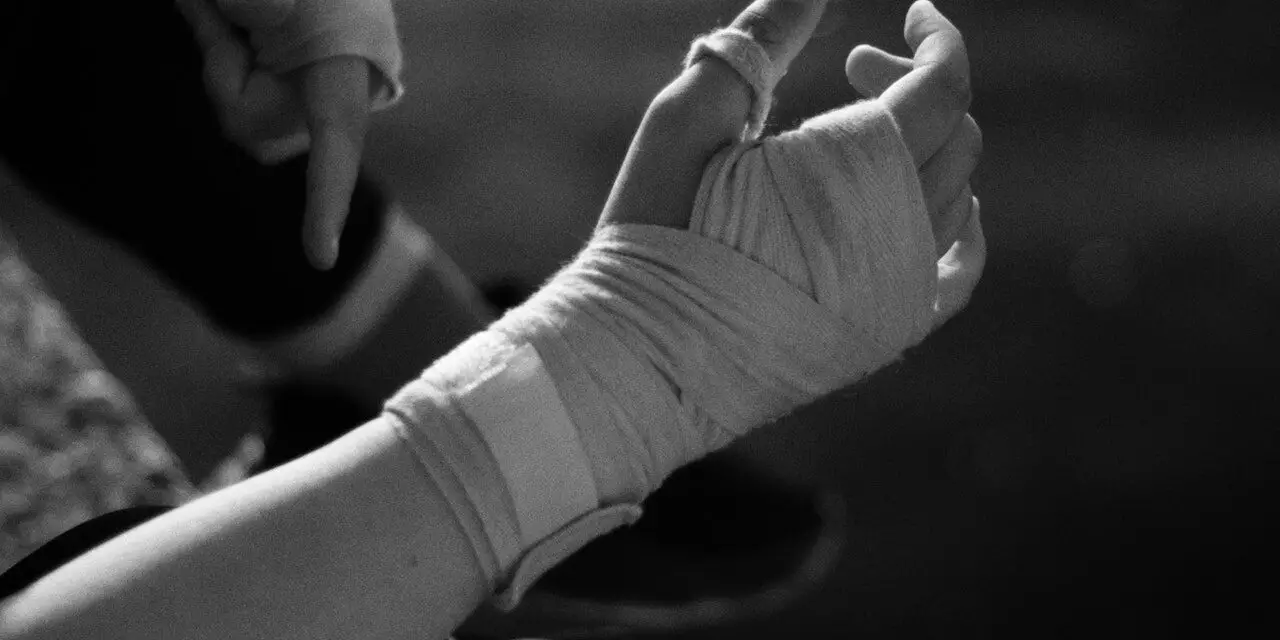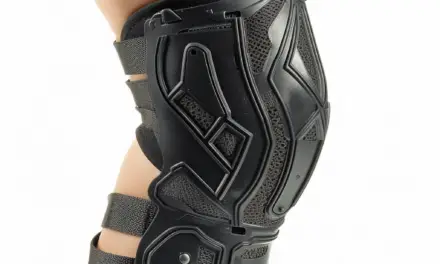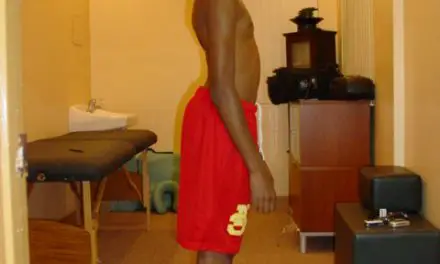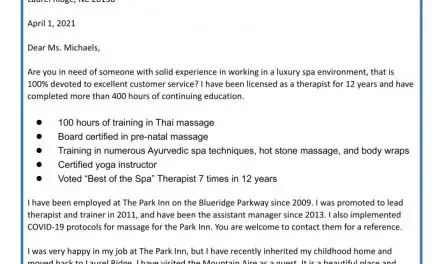Wrist injuries, including fractures and sprains, are quite common and often occur in sports, falls, and accidents. The wrist is a complex joint that is involved in many activities of daily living and often endures repetitive stress and trauma.
Wrist sprains, on the other hand, are more common in younger people and athletes. Sprains occur when the wrist is forcefully bent or twisted, damaging the ligaments that support the joint. A study on more than 50,000 Danish patients with wrist or hand injuries found that these injuries occurred in nearly 30% of the population and almost half of those were fractures.
A 2019 systematic review looked at more than 30 studies and found that 10% of those had a wrist injury in the past week and nearly 20% in the past year.
Is my wrist sprained or broken?
Wrist injuries are more common in women and older adults. Jobs that involve strenuous or repetitive activities can also increase the likelihood of a wrist injury.
Differentiating between a wrist sprain or wrist fracture can be difficult. Both injuries share the following symptoms:
- pain
- tenderness
- bruising
- swelling
- weakness
Symptoms of a fracture include severe pain, deformity, or a complete inability to move your wrist or grasp object. If you experience any of these, imaging is warranted. If you also hear a “crack” or “pop,” you will want to rule out a broken bone.
Also, tenderness in the “anatomical snuffbox”—the hollow that is formed where the base of your thumb meets your wrist—can increase the likelihood that a wrist fracture is present.
How long does it take to heal?
Tissue healing times can vary, but generally it takes 6–8 weeks for bones to heal. The location of a fracture may also influence healing time. Delayed healing can occur because of poor blood supply, inadequate immobilization, or infection.
If a wrist injury is misdiagnosed or the imaging does not immediately show a fracture, a non-union may occur. A non-union occurs when the broken ends of the bone fail to grow back together, which can cause persistent pain and dysfunction. It is common practice in the management of wrist injuries to take repeat images after a few weeks to ensure proper healing and avoid non-unions.
The timeline for a sprain to heal depends on the extent of the injury:
- Grade I sprains typically reach full strength in about 6 weeks.
- Grade II and III sprains may take three months to a year for complete healing.
Treatments for a wrist sprain and fracture
The severity of the injury is a major factor in treatment decisions for wrist injuries. Management may include simple splinting, casting, or even surgery.
Wrist sprain grade
There are 15–20 ligaments in the wrist and each can be sprained. We don’t often identify which specific ligament is injured, rather any and all injuries to these ligaments are referred to collectively as a wrist sprain.
There are dozens of ways to categorize ligamentous injuries, but the most widely used is based on the descriptions mild, moderate, and severe. Knee sprains, ankle sprains, and wrist sprains are all graded using the same three level scale.
- Grade 1 (I): Mild sprain with tiny tears to some fibers of the ligament. The joint remains stable.
- Grade 2 (II): Moderate injury with partial tearing of the ligament fibers. The partial tear of the ligament may result in some instability.
- Grade 3 (III): Severe sprain with complete tearing/rupture of the ligament’s fibers, and the joint becomes unstable.
Surgery
Most simple wrist fractures are managed conservatively. When a scaphoid fracture is displaced or unstable, surgical fixation is the gold standard treatment.
In the case of a non-union, bone grafting from the distal radius or iliac crest is used to bridge the two ends of the bone together. A 2015 systematic review did not find either option to be superior but notably, with surgical intervention, more than 88% of non-unions were corrected.
Medications
There is some value in using non-steroidal anti-inflammatory drugs (NSAIDs) in the treatment of ligament injuries. These medications, taken for a short time, can result in decreased pain and swelling, particularly during the acute phase of injury.
A 2015 meta-analysis that included 22 studies found pain to be better with movement and at rest when NSAIDs were used. Further, the use of these medications decreased swelling in both short and long-term time frames.
There is no consensus on the use of short-term NSAIDs following a fracture delay bone healing. Animal studies have shown delayed bone healing when NSAIDs were used but the delay was not significant when the medication was used for less than a week.
This was echoed by a 2019 study that investigated the use of ibuprofen in patients with acute, unstable fractures that needed surgical intervention. In the 95 patients that were included, there was no difference in fracture healing when ibuprofen was part of the initial management plan.
RICE
RICE is a useful tool for managing acute soft tissue injuries. Recently, some variations of the acronym (PRICE, POLICE, PEACE & LOVE) have emerged, but the basic tenets are the same.
- Rest: Avoid using the affected area to prevent further damage/injury.
- Ice: Apply ice to the area for 15–20 minutes, several times a day to manage acute pain and swelling.
- Compression: Use an elastic bandage to help limit motion and control swelling.
- Elevation: Elevate the injured area above your heart when possible to help improve lymphatic drainage and promote healing.
RICE is a non-specific approach to the immediate management of an injury and may not be appropriate in all situations. Ice and compression are helpful in the short-term management of pain and swelling but after time, they can restrict blood flow to the area and slow healing.
Rest is also an important component of injury management, but if you spend too much time immobilized, you can create disuse atrophy, stiffness, or weakness in the area.
Exercise
As with any injury, there comes a point in the recovery of a wrist sprain or fracture where exercise is appropriate. If you have a wrist sprain, you should wait until the pain and swelling have resolved before starting gentle range of motion exercises. If you have a severe sprain or fracture, there may be a period of immobilization (splint or cast) before starting exercise.
Exercises for wrist sprains or fractures should focus on moving through full range of motion and strengthening in flexion, extension, radial deviation, ulnar deviation, pronation, and supination. Moving your wrist in clockwise and counterclockwise circles and exercises that incorporate grip strength are a great place to start.
Cast or brace
The severity of your injury will determine whether a cast or brace is needed. Mild to moderate sprains can be splinted or braced for a few days to a few weeks while symptoms subside. There is no consensus on whether these injuries do better with early mobilization or immobilization. In a 6-week study of more than 40 patients, pain and function were not significantly different between the conditions.
In more severe injuries, it may be necessary to use a cast or hard splint to immobilize the broken bones while they heal. Casts are usually worn 24 hours a day for 4–6 weeks.
Should I get a massage for a wrist sprain?
Massage therapy can reduce pain, swelling, and stiffness after a wrist sprain or fracture, and it may also promote healing through increased local blood flow and circulation.
Massage may be the most useful as an adjunct to exercise. A recent study showed that as little as seven minutes may be all it takes to decrease muscle stiffness. Researchers believe the improved range motion is caused by a combination of decreased motor neuron excitability, mechanical effects, and increased tissue temperature during the massage.
Related: Wrist ligaments anatomy

Penny Goldberg, DPT, ATC
Penny Goldberg, DPT, ATC earned her doctorate in Physical Therapy from the University of Saint Augustine and completed a credentialed sports residency at the University of Florida. She is a Board Certified Clinical Specialist in Sports Physical Therapy.
Penny holds a B.S. in Kinesiology and a M.A. in Physical Education from San Diego State University. She has served as an Athletic Trainer at USD, CSUN, and Butler University.
She has presented on Kinesiophobia and differential diagnosis in complicated cases. Penny has published on returning to sports after ACL reconstruction and fear of movement and re-injury.
Outside of the clinic, Penny enjoys traveling, good cooking with great wine, concerts, working out and playing with her dogs.





